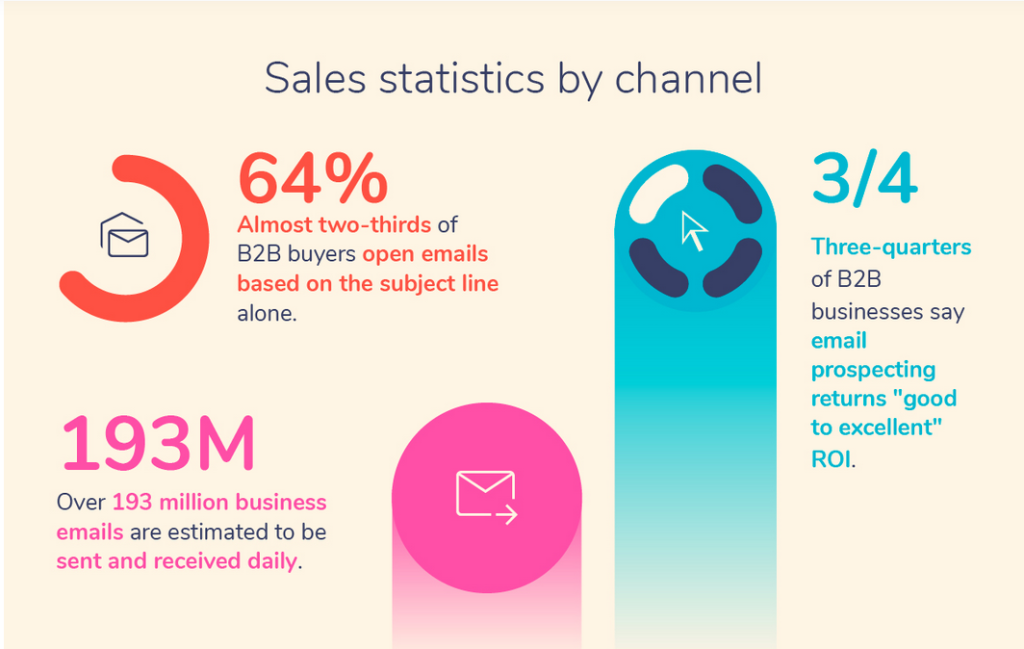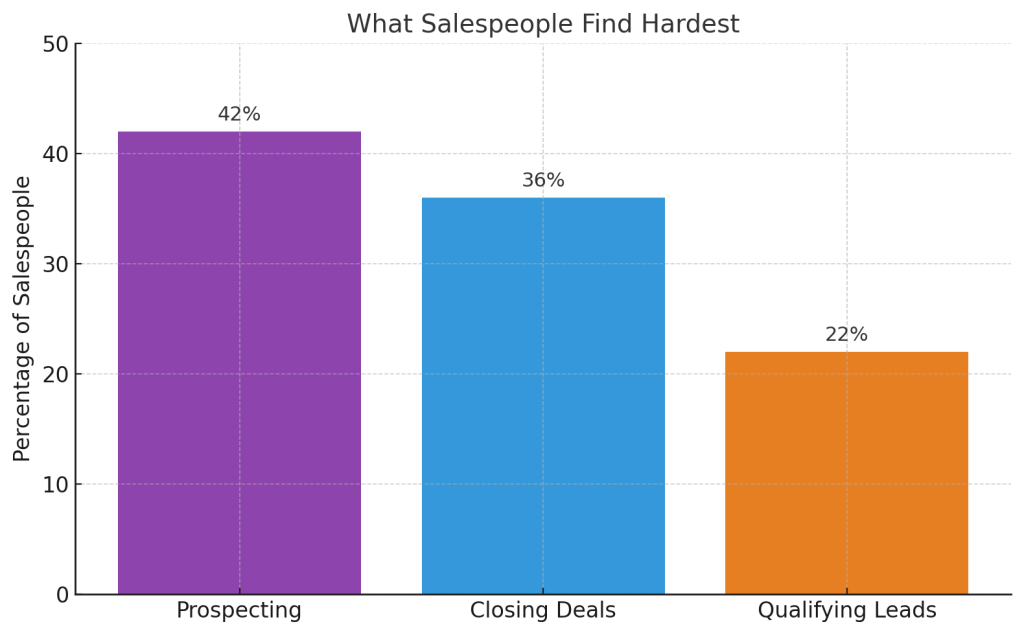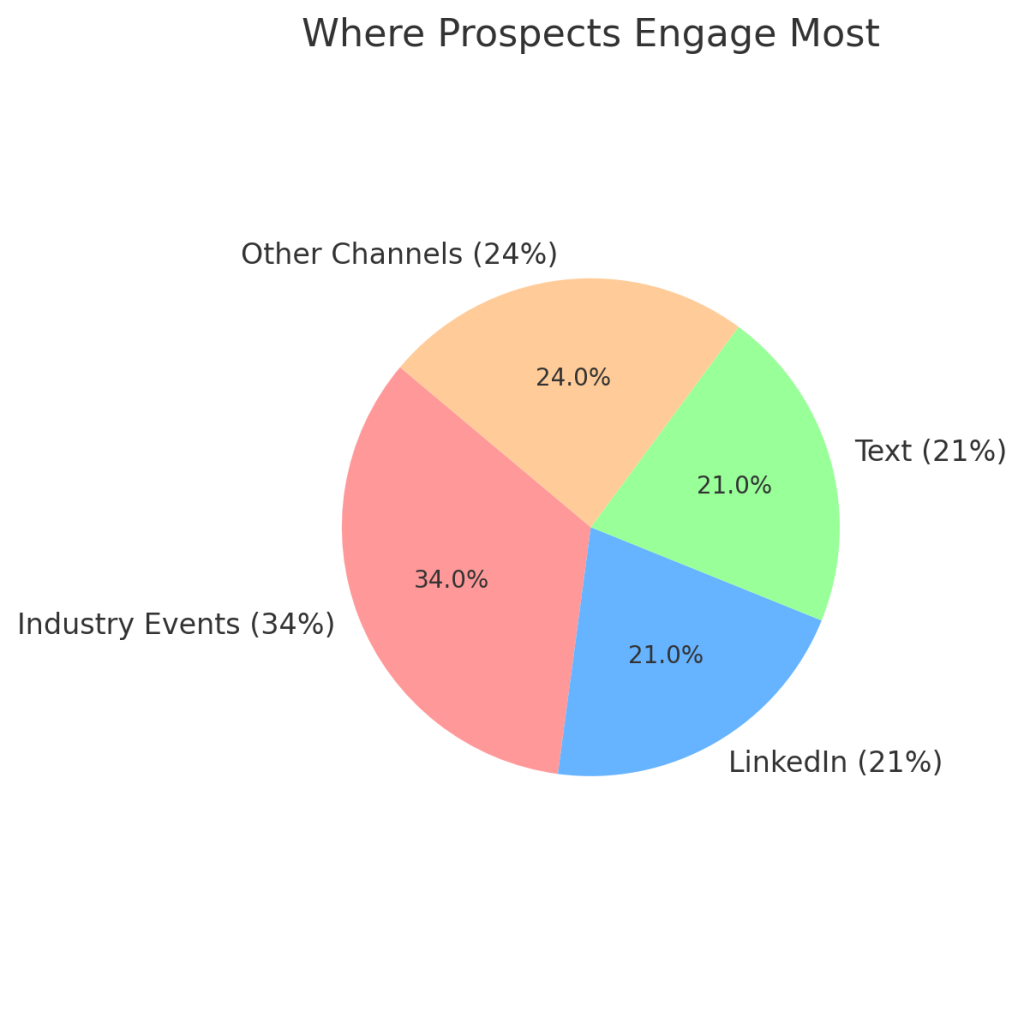- Home
- Fundamentals of Email Marketing
- Sales Prospecting Via Email Ma ...

The word lead has dominated the world of marketing. It is literally everywhere—from dashboards to email subject lines—dominating the language of strategy and performance. But there’s another term, just as crucial, yet far less talked about: sales prospecting.
While often used interchangeably with lead generation, sales prospecting refers to something more focused—and actually, more personal. Knowing the sales prospecting definition—and how it differs from simply collecting leads—can reshape the way you build connections and close deals.
In this article, we’ll get to the real meaning of sales prospecting, find out how to write a prospecting email, and explore channels and strategies that work for it. After understanding how to prospect effectively, you’ll be able to turn contacts into conversations and conversations into conversions with less effort and better outcomes.
What Is Sales Prospecting via Email?
Sales prospecting refers to the process of identifying potential customers, researching their background, and qualifying them as relevant leads—specifically those who are most likely to benefit from a company’s product or service. When applied through email, this process becomes a structured and measurable form of outreach, designed to initiate contact with cold leads in a non-intrusive but highly targeted way.
Email prospecting can be seen as a digital alternative to cold calling. While the latter may still be used in certain sales contexts, email is now widely recognized as a preferred communication channel among most prospects. It allows for more thoughtful messaging, better timing, and the ability to personalize outreach. Compared to traditional methods, it also leaves space for prospects to respond when convenient—a factor that increasingly influences engagement rates among contemporary users.
The primary goal of a prospecting email is not to close a sale immediately but to open a dialogue. This first step lays the foundation for building a relationship that, over time, may lead to conversion. As such, understanding what sales prospecting is today requires shifting focus from aggressive selling to informed, strategic connection-building.
Prospects vs. Leads
In the context of the sales prospecting process, the terms “lead” and “prospect” are often used interchangeably. Nonetheless, in practice, they refer to two distinct stages of potential customer engagement.
A lead is typically someone who has entered your system through a sign-up, download, inquiry, or another form of initial contact. At this stage, there is limited information available, and there’s no clear indication of whether this person needs or wants your product.
A prospect, on the other hand, is a qualified lead—someone who has been researched, vetted, and found to potentially be a good fit for your solution. This is where sales prospecting begins. The individual or company meets a set of criteria (such as budget, industry, or problem fit) and is considered worth contacting through personalized outreach, usually via prospecting email.
👉 In simple terms: all prospects are leads, but not all leads are prospects.
So, which one matters more—leads or prospects? It really depends on where you are in the sales process. If you are running a marketing campaign and trying to reach as many people as possible, leads are important. But if you are in sales and your goal is to have real conversations and close deals, then prospects are what you should focus on. In general, putting more time into qualified prospects—people who are more likely to need what you offer—tends to bring better results than chasing every lead that comes your way.

How to Prospect Effectively: Steps for Success
- Define your ideal customer profile
Before reaching out, you need to know who you are trying to reach. Answer the questions: What industry are they in? What size is their company? What problem are they facing that your product or service can solve? These answers help you narrow your focus and avoid wasting time on contacts who are unlikely to convert.
- Research and qualify your leads
Once you have a list of potential contacts, the next step is to qualify them. This means checking whether they match your criteria. For example, find out whether they’re a decision-maker or actively searching for a solution. This is where a lead becomes a prospect.
- Always personalize
A good sales prospecting email should show the recipient that you understand who they are and why you are reaching out. You should mention something specific about their company, role, or activity. By doing so, you show potential prospects that you did your homework, and they will be more likely to trust you from the very beginning.
- Use a clear and simple message
If your message is too long or too vague, chances are high that your prospect will not engage. The best sales prospecting email examples keep things simple: who you are, why you are reaching out, what value you can offer, and what action you’d like them to take. That’s it—simple and intentional.
- Follow up more than once
Many responses come after the second or third email. So, if you show some persistence, soon you’ll also see results. It is important to remain polite and respectful and add new value or context each time you reach out.

Sales Prospecting Channels
While there’s no best rule for starting a conversation in sales, some channels continue to stand out. Sales prospecting happens today across multiple touchpoints, and each one carries its own rhythm, intent, and character. Still, email remains the best way to prospect, but there are others too.
It would be fair to say that email is the default mode of delivery when it comes to sales prospecting. Nonetheless, in order to qualify, it must possess some must-have attributes:
✅ Sequences. A good email sequence—usually three to five emails—is meant to build a connection with a user, which requires restraint, timing, and clarity. The first message should offer relevance. The second should expand—a use case, a result, a short story. The third might include a question or a gentle prompt. It is worth remembering that one email is never responsible for the result—it is always the sequence that matters.
✅ Personalization. Here you need to dig deeper than just “Dear Mr. Brown”—instead, look for real context, such as a recent product launch, a hiring announcement, or a change in strategy. These signals can be sourced from LinkedIn, press releases, or public databases and serve as a hook for readers, because then it is not just an abstract email—it is about them in particular.
✅ Automation. Automation tools, of course, help with delivery, but the moment you let automation speak louder than your intent, the message fades away—and so does your sales prospect’s interest.
Phone calls
For many teams, phone calls have shifted from cold outreach to warm follow-up. They now work best when there’s already been a signal of interest, like a reply or a download. In those moments, calls start adding context instead of annoying prospects.
Social media
Social media—especially LinkedIn—is less a channel for direct outreach and more a tool for context. Even a quick scroll often reveals the prospect’s priorities, their language, even the tone of their professional world. This informs not just who to reach out to, but how.
Events
Events, virtual or in-person, still play a crucial role in prospecting in sales. But not necessarily in the way we used to think. You do not sell anything during events but build connections via small points of interaction. It can be an email address shared during a breakout session, a quick chat at a booth, or a webinar signup. These micro-moments are where intent begins.
Referral
Referrals remain one of the most underutilized sales prospecting channels—possibly because they require something money can’t buy: a happy customer willing to advocate. But with the right timing (usually just after a deal closes or results are delivered), referral requests can be built directly into follow-up emails or automated post-sale workflows.

How to Write a Prospecting Email
When we talk about how to prospect for sales, some advice comes up over and over again—personalize your emails, write clear subject lines, focus on the prospect’s needs. And it’s true: those things matter. But once you bring those fundamental things in order, what really sets your outreach apart?
Here we are looking at smaller, but equally important, prospecting tips for your outreach that aren’t always covered in typical “how to prospect effectively” guides.
- Don’t over-automate early outreach
Automation is an amazing tool, and around 64% of salespeople use different AI tools to personalize their campaigns. But don’t overrely on it. Especially at the very beginning of your outreach. The earliest point of contact still benefits from a human touch, and prospects can sense when your message is too robotic. Sometimes adding one specific detail or sentence is enough to humanize a template-written text.
- Pay attention to timing
Most prospecting guides suggest sending emails midweek, mid-morning. But let’s take it further and also consider context, as effective sales prospecting does. Consider things like the end of quarters, pre-holiday seasons, or budget freezes to fit perfectly with your offer.
- Think beyond pain points
Everyone talks about solving problems, but try to look beyond that and help people reach their goals. Addressing what the prospect wants to achieve—and how you can help them get there—can feel more empowering than emphasizing what’s wrong.
- Audit your digital footprint before reaching out
Prospects do their homework too. So, be prepared that your LinkedIn profile or website will be audited by your prospects. It is important to make sure your professional presence aligns with the tone and credibility of your outreach, so make sure your LinkedIn looks professional and the webpage is updated.
Sales Prospecting Email Example

Why is this a good sales prospect? Let’s see:
“Quick idea for simplifying Zivana’s wholesale orders”
This subject line feels personal and light. It doesn’t push, but it shows that the email is about something helpful and specific to Zivana, which makes it more likely to be opened.
“…absolutely loved the clean lines and that silk-linen coat in emerald…”
This part is great because it sounds genuine. It proves that the sender actually looked at Zivana’s work and noticed something real, not just copy-pasted a compliment. It builds trust and makes the reader feel seen and appreciated.
“…your buyers can log into a custom portal, view stock in real time, and place or repeat orders in just a few clicks.”
Here, the sender is clearly explaining the benefit. It’s easy to understand and focuses on something that would actually make the recipient’s life easier.
“If Zivana is planning to grow its B2B side this year…”
This line shows the sender has some understanding of the business and its direction. It’s thoughtful, forward-looking, and feels like the message is tailored to where the company might be heading.
To Sum Up
In this article, we looked at what sales prospecting means and how this definition is important for the right kind of outreach. While tools definitely matter in this process—they’re always helpful for organizing, systemizing, and streamlining your work—what really makes the biggest difference in sales prospecting is a personal approach toward your prospects. The more personal details, effort, and thought you manage to put into your email—the more it feels like it’s written for a real person—the higher your chances for success.



